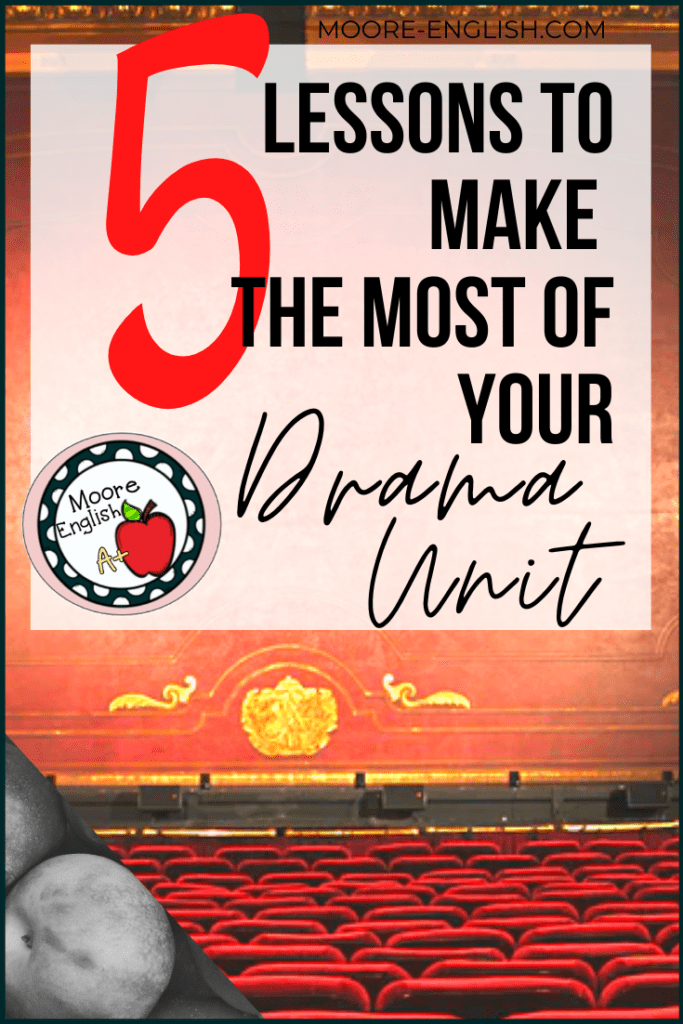My students love our drama unit! It’s one of the highlights of the year because dramas are larger-than-life, bring movement into the classroom, and encourage creative thinking. Because our drama unit is so popular, I wanted to share some of my favorite lessons with you! Here are 5 lessons that work well with any drama unit!
This post this post may contain affiliate links. Please read the Terms of Use.
Author and Stage Craft in Your Drama Unit
In language arts, we talk a lot about author’s craft. When teaching drama, though, we talk about “stage” craft. We talk about how drama represents the vision of a playwright, actors, and a director. These elements come together to create a unified whole. For this reason, different versions of a drama may have different visions and meanings. Regardless of which version of a play students perform or view, all performances have to grapple with plot and tone.
Because plays have to capture and maintain an audience’s attention for a prolonged period, dramas have interesting plot structures. In writing and staging a drama, considerations such a “comedic effect” and “building tension” come into play (get it?). Similarly, plays often feature parallel scenes that contribute to theme development. For these reasons, a drama unit is a great place to analyze text structure. And these task cards are a good way to engage students in discussion of plot and conflict.
Similarly, a drama unit is a great place to teach tone. A playwright produces a script with certain intonations in mind. However, an actor and/or director may apply tone in a different way. When reading and viewing dramas in class, students can analyze how tone further’s an author’s purpose. This game is a good tool for lessons about tone.
Irony is a means of complicating tone. So a drama unit is also a great place to review irony. The world of a drama is also the perfect place for dramatic irony as a means of building mood. Review irony with this collection of videos and listening guides.
Characterization and Archetypes
Because dramas span several acts and, sometimes, several days or months, they are also a great venue for analyzing character development. For example, John Proctor’s character development is key to understanding The Crucible. On the other hand, Brutus’ lack of development drives home the lessons central to Julius Caesar. With figures like this, a drama unit is a good place to review characterization. These task cards can help students discuss character moves meaningfully!
In addition, a drama unit provides a good place to discuss archetypes. Because dramas are intended to be viewed in one setting, playwrights often draw on familiar figures like the tragic hero. So this means that teachers can use a drama unit to study the hero’s journey and familiar Jungian archetypes. Check out this set of guided notes to introduce the archetypal hero and anti-hero or use this freebie to help students define heroism on their own terms.
Here are some resources for teaching drama:
- The Crucible Assessment Bundle
- Visualizing Shakespeare Bundle
- Macbeth and Hamlet listening guides
- Abridged and Modified Romeo and Juliet

Photo by Peter Lewicki on Unsplash















